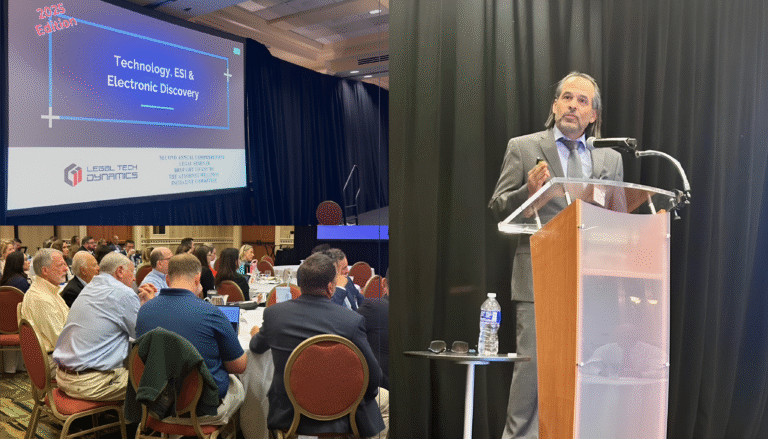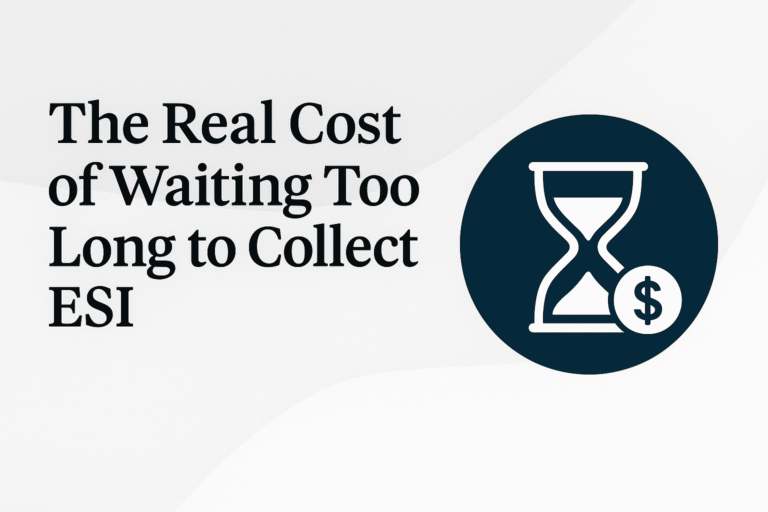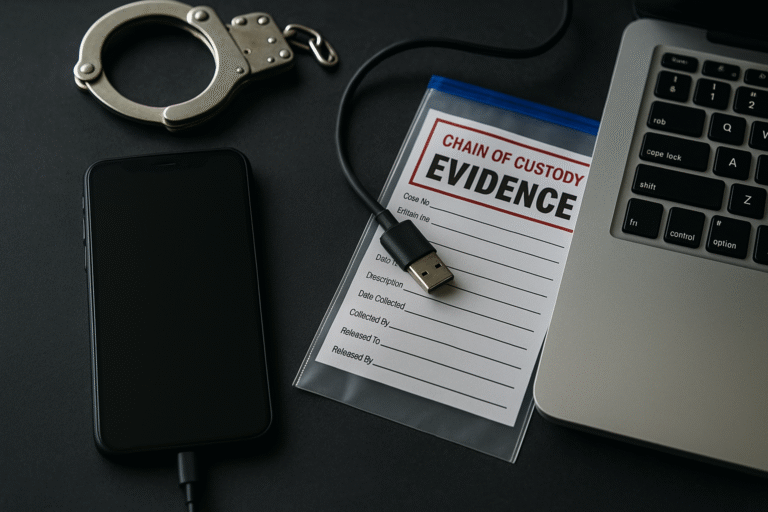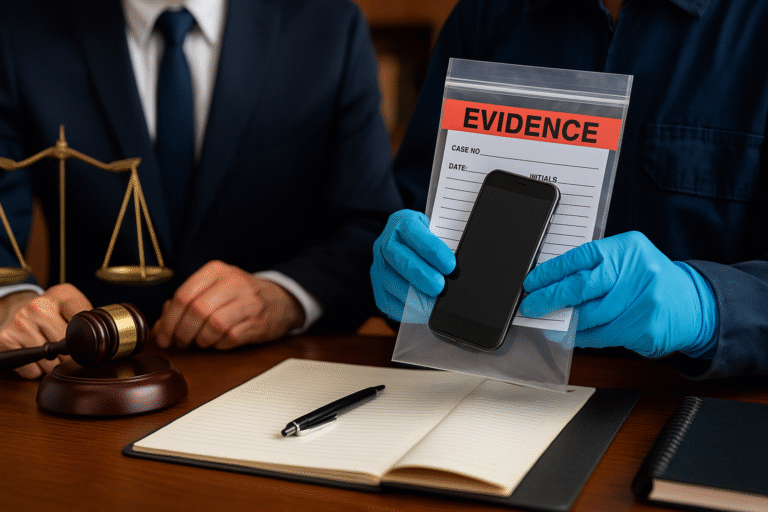By Carlos A. Baradat, Esq. | Legal Tech Dynamics
In the digital age, electronically stored information (ESI) has transformed the landscape of discovery in litigation. From emails and text messages to metadata buried in digital files, ESI offers an unparalleled opportunity to uncover the truth. However, finding, preserving, and analyzing ESI is no simple task. This is where digital forensics comes into play, bridging the gap between hidden data and actionable evidence.
In this article, we’ll explore the intersection of digital forensics and eDiscovery, demonstrating how forensic tools locate and extract ESI from unconventional sources and why defensible workflows and chain-of-custody protocols are critical to preserving evidence integrity.
The Intersection of Digital Forensics and eDiscovery
Digital forensics and eDiscovery are complementary disciplines. While eDiscovery focuses on managing and analyzing ESI for litigation, digital forensics zeroes in on uncovering, preserving, and authenticating data—often from sources overlooked in traditional eDiscovery processes.
For example, digital forensics might be called upon when:
- Data has been intentionally deleted or altered.
- Evidence exists in obscure or unconventional locations, such as encrypted devices or temporary files.
- The authenticity of ESI is disputed, requiring detailed metadata analysis to verify its origins.
By leveraging advanced forensic tools, attorneys can expand the scope of eDiscovery to ensure no relevant data is missed, whether it’s hidden in a smartphone, buried in a server’s unallocated space, or embedded in a cloud storage account.
Using Forensic Tools to Extract Hidden ESI
Forensic tools are indispensable in locating and extracting ESI from unconventional or obscured sources. Here’s how they work in various scenarios:
1. Uncovering Hidden Files
Forensic tools can identify files that have been hidden, renamed, or moved to obscure directories. For example, in fraud cases, critical spreadsheets may be stored under unrelated filenames or within innocuous-looking folders.
2. Recovering Deleted Data
Deleted files aren’t necessarily gone forever. Digital forensics can recover data from unallocated disk space, system logs, or backup systems. Even remnants of a file can provide valuable evidence.
3. Locating Metadata
Metadata often serves as the “fingerprint” of digital evidence, revealing who created a file, when it was last modified, and even its geographic origins. For instance, in intellectual property cases, metadata can establish the timeline of a document’s creation and use.
4. Extracting Data from IoT Devices
The Internet of Things (IoT) has introduced a new frontier for ESI. Devices like smart speakers, wearables, and even home security systems can store logs, audio recordings, or location data. Forensic tools can extract this information to support cases ranging from alibi verification to digital harassment claims.
5. Decrypting Secured Data
When ESI resides in encrypted devices or accounts, forensic tools equipped with decryption capabilities can unlock critical data. However, strict legal protocols must be followed to ensure admissibility.
Defensible Workflows: A Critical Component
Locating and extracting ESI is just the beginning. To ensure the evidence holds up in court, it must be collected and handled in a defensible manner. This is where a structured and transparent workflow becomes crucial.
1. Defensible Workflows in Practice
A defensible workflow involves clear documentation of every step taken to identify, preserve, and analyze ESI. This includes:
- Initial Preservation: Implementing a litigation hold to prevent the alteration or destruction of data.
- Forensic Imaging: Creating an exact replica of digital devices to ensure the original data remains unaltered.
- Detailed Logs: Recording every action taken during data collection, including timestamps and the identity of those involved.
2. The Importance of Chain of Custody
Chain of custody is a cornerstone of evidence integrity. This process documents every transfer and interaction with the evidence, ensuring there’s no opportunity for tampering or accidental modification. A break in the chain of custody can render evidence inadmissible, no matter how compelling it may be.
For instance, if a forensic image of a hard drive changes hands between experts, a clear record must exist showing who accessed the drive, when, and why. This transparency protects the evidence from challenges by opposing counsel.
Best Practices for Attorneys in ESI Discovery
Attorneys navigating ESI discovery can benefit from adopting the following strategies:
1. Engage Forensic Experts Early
Involve digital forensics professionals at the outset of the case. Their expertise can help identify unconventional data sources and prevent inadvertent spoliation during initial evidence handling.
2. Educate Clients on Preservation
Clients often unintentionally jeopardize ESI by deleting files, using affected devices, or failing to follow litigation holds. Take time to educate them on the importance of preserving all potentially relevant data.
3. Customize Discovery Protocols
Tailor your discovery plan to the specifics of the case. This includes identifying all possible ESI sources—mobile devices, cloud accounts, IoT devices—and determining how to address potential challenges like encryption or hidden files.
4. Focus on Metadata
Metadata analysis can uncover critical details about a document’s creation, access, and modification history. Use this data to strengthen your case or challenge the opposing party’s evidence.
5. Leverage Advanced Tools
Utilize cutting-edge forensic software and platforms that integrate AI for faster and more accurate data analysis. These tools can significantly reduce the time and cost associated with large-scale ESI discovery.
The intersection of digital forensics and eDiscovery is reshaping the way attorneys approach evidence collection and analysis. By combining forensic tools with defensible workflows and chain-of-custody protocols, legal professionals can uncover hidden digital breadcrumbs that might otherwise remain unseen.
As ESI continues to dominate modern litigation, mastering the integration of digital forensics into eDiscovery is no longer optional—it’s essential. By embracing these techniques, attorneys can navigate complex data landscapes with confidence, ensuring their cases are supported by robust, credible evidence.
Carlos A. Baradat, JD
Law Professor, Digital Forensics, and eDiscovery Specialist
www.ltdynamics.com
For speaking engagements, training workshops, or legal tech support, you can reach Mr. Baradat at 239-221-6359.
—
Legal Tech Dynamics: Digital Forensics, Legal Tech Consulting, and eDiscovery Services in Central Florida, South Florida, and Nationwide
At Legal Tech Dynamics, we specialize in digital forensics, eDiscovery, legal tech consulting, law firm technology training, attorney ESI consulting, and litigation consulting. With offices in Naples, FL, and Boca Raton, FL, we proudly serve clients throughout Central and South Florida, as well as nationwide, including major cities such as Fort Lauderdale, Miami, Tampa, Fort Myers, Marco Island, West Palm Beach, and Orlando.
Whether you’re navigating digital evidence analysis, managing litigation holds, responding to requests for production, or seeking guidance on ethical and privacy considerations in eDiscovery, our experienced team is here to help. We deliver tailored solutions to attorneys, law firms, corporate clients, and individuals, ensuring secure digital data, improved legal case management, and successful eDiscovery outcomes.
📞 Call us today at 239-221-6359 to learn how we can support your legal and technical challenges and help you achieve your goals with confidence.














